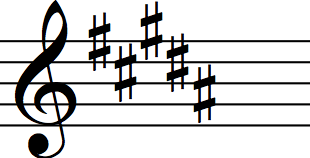What is it like to live on Mars time?
May 13th, 2012 at 7:20 pm (Health, Planets)
Stressful, according to “Choosing Mars Time: Analysis of the Mars Exploration Rover Experience” by Deborah S. Bass, Roxana C. Wales, and Valerie L. Shalin. Almost certainly, one would adjust quite easily to a Mars-length day (24 hours + 39 minutes) if it were synchronized to the rest of the planet. But as the Mars Exploration Rover scientists and mission operators discovered, keeping Mars time on Earth plunges you perpetually into jet lag limbo.
 The decision was made to run MER mission operations on Mars time so that personnel could be synchronized with the rovers’ wake/sleep cycles. They slept while the rovers were awake, and they were awake in turn to receive the latest data and make plans for the next sol’s commands to send back, while the rovers slept. This meant that for those on Mars time, each “day” rotated 39 minutes forward relative to local Earth time — as if they were gradually sliding westward almost (but not quite) one time zone per day. To help with the time-shifting, the buildings were outfitted with black-out curtains and cots and irregular (to Earthlings) meal service. My favorite touch: personnel were given special watches designed to tick off 24:37 per day instead of 24:00.
The decision was made to run MER mission operations on Mars time so that personnel could be synchronized with the rovers’ wake/sleep cycles. They slept while the rovers were awake, and they were awake in turn to receive the latest data and make plans for the next sol’s commands to send back, while the rovers slept. This meant that for those on Mars time, each “day” rotated 39 minutes forward relative to local Earth time — as if they were gradually sliding westward almost (but not quite) one time zone per day. To help with the time-shifting, the buildings were outfitted with black-out curtains and cots and irregular (to Earthlings) meal service. My favorite touch: personnel were given special watches designed to tick off 24:37 per day instead of 24:00.
However, the bizarre schedule was challenging not just due to fatigue and physiological issues but, as the authors discuss, sociological ones, like maintaining connections to friends or family members, or figuring out how to pick up your child from school when (by your calendar) that pick-up time moves 37 minutes earlier each day! An extra complexity arose from the fact that the two rovers, Spirit and Opportunity, were on opposite sides of Mars — so there were actually two different Mars times observed during the mission, depending which rover you were supporting.
Although efforts were made to provide reasonable meal service, it wasn’t perfect:
“Operations staff occasionally were confused about whether the [food] cart would be present when they had a break as they were tracking multiple clocks simultaneously as well as working a schedule that did not follow the normal workday/weekend cycle.”
But there was one reliable source of calories: ice cream.
“Free ice cream, provided as a reward for a successful mission, was also available to the team at all hours. Because the ice cream was easily available, operations personnel ate more of it than they would have normally (3-5 ice cream bars/day was not unusual). Some people gained weight. There is anecdotal evidence that team members relied on the ice cream as both a reward and a pick-me-up to push through the harder parts of their shift work.”
I’ve been told that personnel also wore biometric devices, to track blood pressure, heart rate, and so on. This was a grand experiment from the human physiology perspective: 250 people living with an altered clock, for 90 days, and not in isolation but instead while trying to perform their jobs and live their regular lives as much as possible. I haven’t yet identified a paper analyzing that data or reporting on the conclusions, but I’d love to find such a thing!

 The phrasing might make one think that peanuts are also low in saturated fat. But according to my jar, 1.5 ounces of them provides 3 grams of saturated fat, or 15% of your US RDA. So as long as that handful of peanuts is only 1/6 of your daily fat consumption, does that count as “low”? Notice you are also not permitted any increase in calories consumed, so if you add the peanuts, you have to take away 260 calories of something else. Or maybe not.
The phrasing might make one think that peanuts are also low in saturated fat. But according to my jar, 1.5 ounces of them provides 3 grams of saturated fat, or 15% of your US RDA. So as long as that handful of peanuts is only 1/6 of your daily fat consumption, does that count as “low”? Notice you are also not permitted any increase in calories consumed, so if you add the peanuts, you have to take away 260 calories of something else. Or maybe not.

